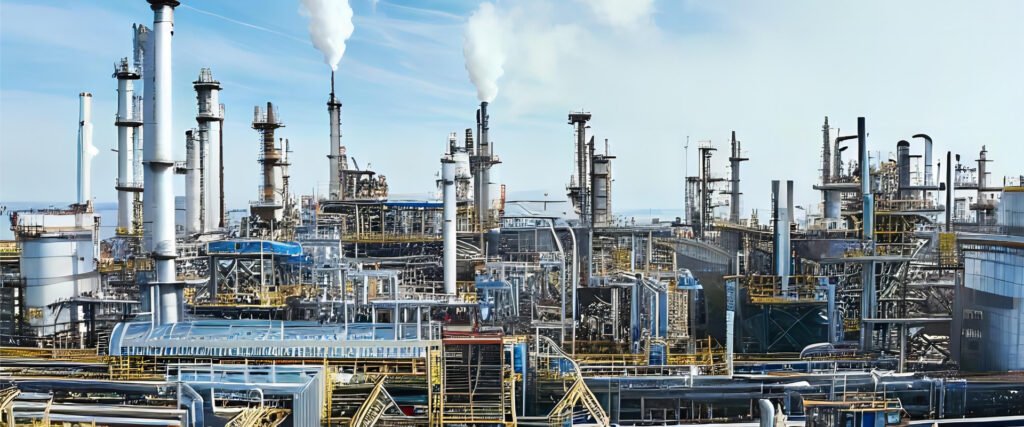Your cart is currently empty!
TEL:08615998857658

High performance anti-rust additives
Anti-rust additives inhibitors are very polar compounds. Its polar groups have strong adsorption force on metal surfaces.
Description
| Anti-rust additives inhibitors are very polar compounds. Its polar groups have strong adsorption force on metal surfaces. It can form a tight single-molecule or multi-molecule protective layer on the metal surface to prevent corrosive media from contacting the metal and play an anti-rust role.
In addition, the base oil that dissolves the anti-rust agent can be adsorbed in places where the anti-rust agent is less adsorbed, and penetrates deeply into the molecules of the anti-rust additive. The van der Waals force works with the additive molecules to make the adsorption film stronger. Due to the role of the base oil, the additives are more firmly adsorbed to the metal surface and are not easily detached. Oils can also form concentrates with additives, making the adsorption film tighter. In short, these functions of the base oil are conducive to protecting adsorbed molecules, maintaining the thickness of the oil film, and playing a certain anti-rust role. The most commonly used anti-corrosion agents such as: barium sulfonate, calcium sulfonate, modified calcium sulfonate, amine borate, amine chloride There are a variety of high-performance rust inhibitor additives used in various industries, each tailored to a specific application. Some of these additives include: Zinc additives: Zinc-based additives are widely used for their excellent anti-corrosion properties. The zinc coating creates a protective layer that acts as a barrier against moisture and oxygen, preventing rust. Phosphate Additives: Phosphate additives form a layer of insoluble crystalline compounds on metal surfaces that act as a corrosion barrier. Chromate: Chromate compounds are effective in providing corrosion resistance to metals. However, their use in some applications has decreased due to environmental concerns related to their toxicity. Molybdenum Additives: Molybdenum-based additives can provide corrosion resistance by forming a protective layer on metal surfaces, especially at high temperatures and extreme environments. Organic Inhibitors: Organic inhibitors such as amines, organic acids, and certain polymers form protective films on metal surfaces that prevent the interaction between the metal and the corrosive agent. When selecting a rust inhibitor additive, it is important to consider factors such as the environment the metal will be exposed to, the type of metal, application methods, regulatory requirements and cost-effectiveness. Additionally, proper surface preparation and application techniques are critical to the effectiveness of these additives. |
High-Performance Anti-Rust Additives: Protecting Your Metals Effectively
Several high-performance anti-rust additives excel in safeguarding metals from corrosion, offering superior protection even in demanding environments. Here’s a breakdown of key options and considerations to help you choose the right one for your needs:
Types of High-Performance Anti-Rust Additives:
- Organic Acid Salts: Eco-friendly options offering excellent rust protection without harmful phosphorus or sulfur. Examples include calcium and magnesium stearates.
- Phosphate Esters: Offer good rust and wear protection, but environmental concerns and potential compatibility issues exist.
- Molybdenum Compounds: Provide excellent anti-wear and extreme pressure protection, often combined with other anti-rust additives.
- Nitrite-Free Triazoles: Environmentally friendly alternatives to traditional nitrites, offering good rust and corrosion inhibition.
- Surfactant Blends: Utilize a combination of surfactants to create a protective film on metal surfaces, repelling water and preventing corrosion.
- Nanomaterials: Emerging technology with promising potential for enhanced anti-rust performance and environmental friendliness.
Choosing the Right High-Performance Anti-Rust Additive:
- Application: Consider the specific environment and potential corrosion risks involved (e.g., high humidity, salt exposure, acidic contaminants).
- Metal compatibility: Ensure the chosen additive is safe for the metals in your application to avoid potential harm.
- Performance requirements: Determine the desired level of rust protection, considering factors like temperature, pressure, and contact conditions.
- Environmental regulations: Some regions have restrictions on specific additives due to environmental concerns.
- Cost-effectiveness: Balance the cost of the additive with its performance benefits and suitability for your needs.
Additional Considerations:
- Synergy: Combining different anti-rust additives can sometimes offer enhanced performance through synergistic effects.
- Compatibility with other additives: Ensure the chosen additive is compatible with other components in the lubricant or grease formulation.
- Regular maintenance: Regularly monitoring the condition of your lubricant or grease and replenishing as needed is crucial for maintaining effective rust protection.
Consulting an Expert:
Consulting a qualified lubricant specialist or tribologist (friction and lubrication specialist) is highly recommended for selecting the optimal high-performance anti-rust additive. They can consider your specific application, metal compatibility, performance requirements, and environmental regulations to ensure optimal protection for your metals.
Remember: Choosing the right high-performance anti-rust additive can significantly extend the lifespan of your metal components and minimize costly downtime due to corrosion. Consulting an expert ensures you make an informed decision and achieve optimal protection for your metals.
I hope this information is helpful! Feel free to ask if you have any further questions about specific high-performance anti-rust additives or their suitability for your application.







Reviews
There are no reviews yet.